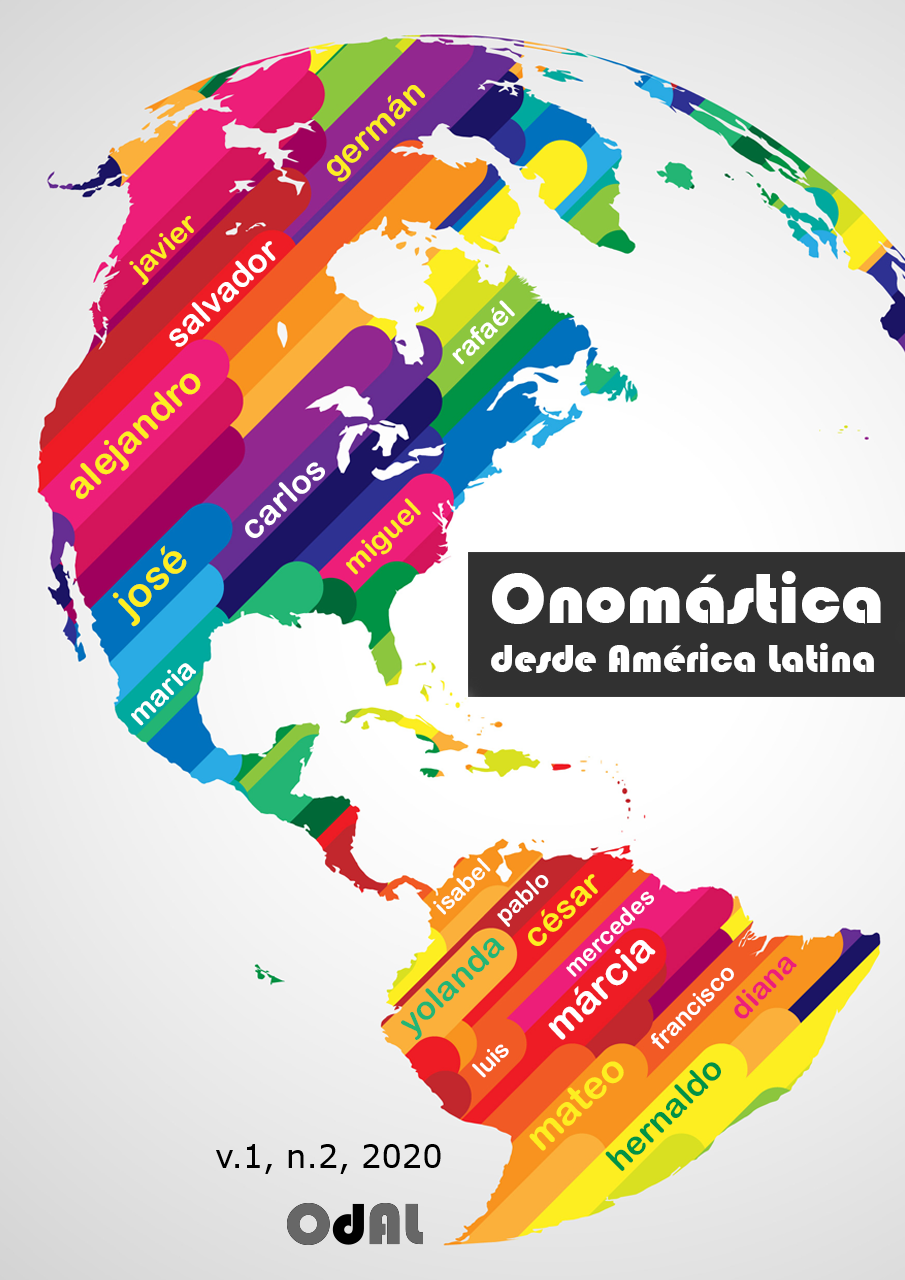Nomination and Spatialization as agents of the tragic in “Os Maias”
DOI:
https://doi.org/10.48075/odal.v1i2.24290Keywords:
Literary onomastics, Literary anthroponomastics, Literary toponymy, Os Maias, Bourgeois tragedyAbstract
Before the first considerations of this study began, Steiner (2006 [1961]) would advise us that the tragedy is dead, as well as remind us of Saussure (2006 [1916]) that the referent does not fit the arbitrary logic of language; but, as Bacon (2005 [1869]) proves, it is easier to disconfirm hypotheses than to try to demonstrate that something will always happen. Based on this dicto simplicitere logic, this study seeks to corroborate the occasion of a tragedy in the midst of realistic literary production and the relevance of less arbitrary aspects of the language - proper names - for such proof. Acting in an interdisciplinary way, as the literary onomatics allows, this work situates the Portuguese work “Os Maias” as a hybrid Portuguese-bourgeois tragedy, as well as theorizing the functions of anthroponyms (Guérios, 1973) and space, as tragic-determining agents of the mentioned work; enabling function of the perspective of the tragic in a bourgeois fictional context.
Keywords: Literary onomastics; Literary anthroponomastics; Literary toponymy; Os Maias. Bourgeois tragedy.
References
Aristóteles. (1966). Poética. Porto Alegre: Globo.
Baldus, Hebert. (1937). Ensaios de etnologia brasileira. São Paulo – Rio de Janeiro – Recife: Companhia editora Nacional, 1937.
Biderman, Maria Tereza. (1998). Dimensões da palavra. In: Filologia e Lingüística, n. 2, 81-118.
Camargo, Amanda Kristensen de.(2018) Nomes próprios no romance contemporâneo O Berro do Cordeiro em nova York: um estudo onomástico exploratório. 159 f. Dissertação (Mestrado em Letras) - Universidade Estadual do Oeste do Paraná, Cascavel.
Costa, Lígia Militz da; Remédios, Maria Luiza Ritzel. (1988).A Tragédia: Estrutura e História. São Paulo: Ática.
Debus, Friedhelm. (2002). Namen in literarischen Werken. (Er-)Findung - Form - Funktion, Stuttgart.
Eckert, Kleber; Röhrig, Maiquel. (2016). Antroponímia ficcional: o caso de Ubirajara, de José de Alencar. Revista GTLex. v. 2, n. 1, jul./dez.
Eckert,Kleber; Röhrig, Maiquel. (2018). Onomástica literária em Graciliano Ramos: os nomes dos personagens de Vidas Secas e de São Bernardo. Revista de Estudos da Linguagem. v. 26, n. 3, 1277-1294.
Guérios, Rosário Farâni Mansur. (1973). Dicionário Etimológico de nomes e sobrenomes. São Paulo: Ave Maria.
Filho, Ozíris Borges. (2007). Espaço e literatura: introdução à topoanálise.Franca: Ribeirão Gráfica e Editora.
Frazer, Sir James George. ([1890], 1982). O Ramo de Ouro. Rio de Janeiro, Guanabara.
Kleinpaul, Rudolf. (1921). Die Deutschen Personennamen: Ihre Ebrsrehung und Bedeutung. Berlim e Lípsia.
Leite, Cláudia Aparecida de Oliveira.(2008).Quando o corpo pede um nome – a título provisório. Campinas, SP: [s.n].
Lévi-Strauss, Claude. (1962). O totemismo hoje. Rio de Janeiro, Ed. Vozes.
Nascimento, Danilo de Oliveira.(2016).Perspectivização trágica e espaço do trágico na Literatura Brasileira. Verbo de Minas, Juiz de Fora, v. 17, n. 30., 140-155, ago./dez.
Nietzsche, Friedrich Wilhelm. ([1873]1995). A Filosofia na Idade trágica dos Gregos.Trad. Maria Inês Madeira de Andrade. Rio de Janeiro: Elfos Editora; Lisboa: Edições 70.
Queirós, Eça de. (2009). Os Maias. São Paulo: Editora Escala.
Rabant, Claude.(1993).Inventar lo real.Buenos Aires: Nueva Visión.
Steiner, George.([1961] 2006)..A morte da tragédia.São Paulo: Perspectiva.
Van Langendonck, Willy. (2007). Theory and typology of proper names. Berlin: Walter de Gruyter.
Williams, Raymond.(2002).Tragédia moderna. São Paulo: Cosac &Naify.
Downloads
Published
How to Cite
Issue
Section
License
Copyright (c) 2020 Onomástica desde América Latina

This work is licensed under a Creative Commons Attribution-NonCommercial-ShareAlike 4.0 International License.
Creative Commons Copyright Notice
Open Access Journals Policy
Authors who publish in this journal agree to the following terms:
1. Authors retain the copyright and grant the journal the right of first publication, with the work simultaneously licensed under the Creative Commons Attribution License that allows the sharing of the work with recognition of authorship and initial publication in this journal.
2. Mandatory authorities to assume commitments, for non-exclusive distribution of the version of the work published in this journal (eg, publish in an institutional repository or as a book chapter), with recognition of authorship and initial publication in this journal.
3. Authors are allowed and encouraged to publish and distribute their work online (eg in institutional repositories or on the personal page) at any point before or during the editorial process, as this can generate productive changes as well as increase impact and citation of the published work (See The Effect of Open Access).
Creative Commons License
This work is licensed under a Creative Commons Attribution-NonCommercial-ShareAlike 4.0 International License, which allows sharing, copying, distributing, displaying, reproducing, a whole or parts as long as it has no commercial purpose and is cited by authors and a source.

